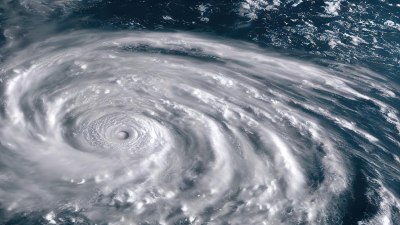Why Some Storms Hum Before Striking: The Mystery of Infrasound
Explore the phenomenon of infrasound and why some storms emit a humming sound before they strike.

In the vast complexity of nature, storms have always intrigued mankind with their unpredictable behavior and profound power. While thunderclaps and strong winds are often associated with stormy weather, there's another phenomenon that can precede a storm: the mysterious hum known as infrasound. This article delves into the perplexing world of infrasound, its origins, how it relates to storms, and its implications for meteorological phenomena.
Understanding Infrasound
Infrasound refers to sound waves with frequencies below the lower limit of human audibility, typically below 20 Hz. Although humans can't hear these low-frequency sounds, they can have significant effects on both people and the environment. Infrasound can be generated by various natural phenomena including volcanoes, earthquakes, and notably, storms.
The Science Behind Infrasound
The infrasound produced by storms is mainly generated by turbulent air movements, lightning strikes, and thunder. The random mixing of air creates sound waves that can travel long distances. These low-frequency sounds can be detected by specialized equipment designed to pick up vibrations too low for human ears, allowing researchers to study atmospheric phenomena in new ways.
When atmospheric pressure changes rapidly during the onset of a storm, the movement of air can create these infrasound waves. The shifts in pressure and temperature coupled with rapid air movements produce waves that can resonate through the atmosphere, sometimes creating a distinct humming sound that precedes a storm.
The Connection Between Infrasound and Storms
Storms, particularly severe ones like thunderstorms and hurricanes, can produce significant amounts of infrasound. Research indicates that the sound generated can be a signal of impending changes in weather patterns. The audible signals, where present, can serve as warnings, alerting individuals to prepare for the oncoming weather, although recognizing these signs is less common in modern society.
In thunderstorms, for instance, the rapid expansion and contraction of heated air can generate infrasound waves. People close to the storm may hear a low hum or rumble, but most do not consciously realize the phenomenon is infrasound. The intensity and characteristics of the humming or rumbling can vary based on factors including distance from the storm, its intensity, and environmental conditions such as humidity and temperature.
Infrasound Detection Technology
In the field of meteorology, the detection of infrasound has become an important tool for understanding storms. Specialized sensors and microphones can capture these low-frequency sound waves, enabling meteorologists to analyze storm behavior accurately. This technology allows for real-time monitoring of severe weather conditions and may help in improving warning systems for storms.
Researchers can utilize data gathered from infrasound to create models predicting storm paths, intensity, and even providing early alerts to populations in vulnerable areas. Such advancements have the potential to save lives by giving people a chance to prepare for severe weather before it occurs.
The Physiological Effects of Infrasound
Interestingly, infrasound doesn't just have implications for weather prediction; it can also affect living organisms. Exposure to infrasound has been linked to various physiological and psychological effects, including feelings of unease, anxiety, and discomfort. It's theorized that the body's response to infrasound could be tied to an evolutionary adaptation that helps warn us of natural dangers, such as storms or earthquakes.
Moreover, studies have shown that certain animals are more sensitive to infrasound. Some species, including elephants and whales, can detect these low-frequency sounds and utilize them for communication and navigation. This sensitivity allows them to sense impending storms from afar, giving them the opportunity to seek shelter or change locations.
Natural Phenomena and Infrasound Beyond Storms
Besides storms, infrasound is a component of various natural events. For example, volcanic eruptions generate powerful infrasound waves that can be detected hundreds of kilometers away. Earthquakes also produce infrasound as the seismic waves compress and displace air. Understanding these events can help scientists better predict natural disasters and develop systems to mitigate their impacts.
Furthermore, the study of infrasound contributes to our knowledge of atmospheric dynamics. Infrasound waves can provide insight into oceanic processes and how they affect weather patterns. By studying the frequencies and structures of infrasound, scientists can glean important information about shifts in climate and weather, enhancing our understanding of global weather systems.
The Future of Infrasound Research
As technology continues to evolve, the ability to capture and analyze infrasound will likely improve. Researchers are incorporating machine learning techniques alongside traditional meteorological methods, enhancing prediction models and refining our approaches to understanding complex atmospheric phenomena.
Ultimately, understanding the relationship between infrasound and storms can revolutionize weather forecasting and disaster preparedness. It holds the promise of giving rise to more accurate and timely warnings, which is crucial in areas frequently affected by extreme weather events.
In conclusion, the hum that often precedes storms, a manifestation of infrasound, is an intriguing aspect of meteorology. While we generally cannot hear this phenomenon, the waves carry significant information about impending weather changes. Research into infrasound reveals its potential not only for storm prediction but also for understanding broader environmental changes. As scientists continue to harness the power of infrasound, we may find ourselves better equipped to face the unpredictability of nature.











